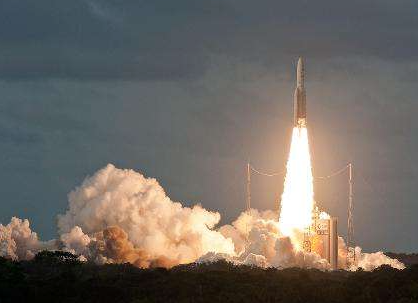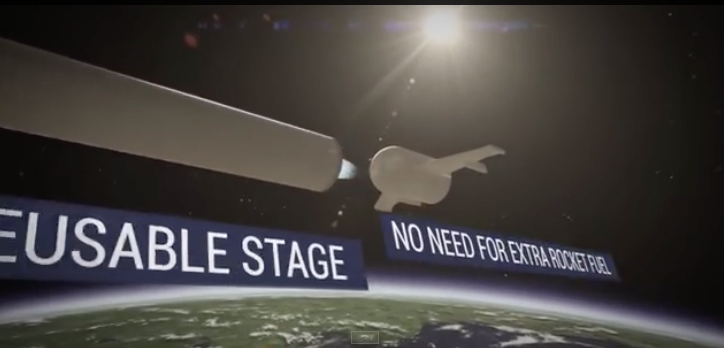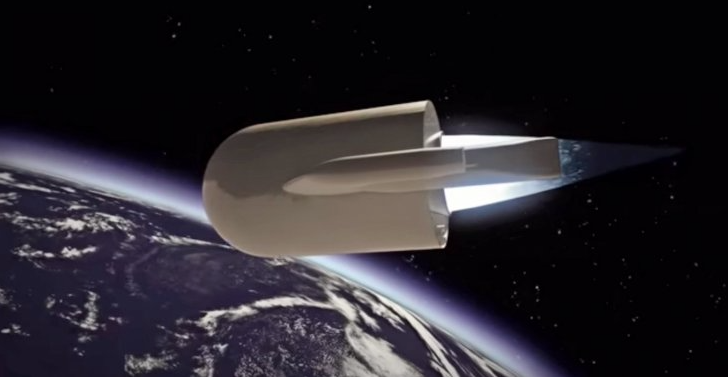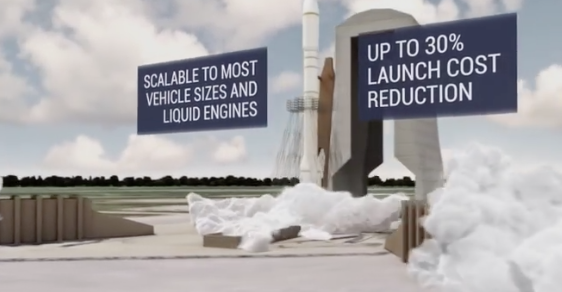[SatNews] French aerospace manufacturer Airbus is currently testing out a space launcher system that is partially reusable and can return to Earth and fly safely back to its home as an unmanned aerial vehicle (UAV) that should be ready in 2025, which the firm says will be radically different from the concept of rival U.S. firm Space X.

The Ariane, built by Airbus Defence and Space. Airbus has unveiled plans for a reusable space rocket launcher that should be ready in 2025
Airbus's Space and Defence division has invented the Advanced Expendable Launcher with Innovative Engine Economy (Adeline) system, which aims to reuse the most costly parts to save up to 80 percent of the cost of the space launcherAirbus must overcome significant technical and financial challenges, while the Space X company owned by South African-born billionaire Elon Musk, co-founder of PayPal, is already experimenting with its model. Airbus dubbed the two phases of its reusable launcher concept Adeline and Space Tugs.
Since 2010, a team of engineers has been secretly working at an Airbus warehouse at Les Mureaux, just outside Paris, looking for ways to reuse space rocket launchers. They have a difficult task ahead because they must ensure that reuse ends up costing less than sticking to classic single-use models.
The main stage launches and operates the rocket in the first phase of its journey. The later stage comes into action in the second part," said Francois Auque, director of Airbus's Defence and Space program.
Adeline, which stands for ADvanced Expendable Launcher with INnovative engine Economy, is original because it combines space technology with aeronautics, said Herve Gilibert, technical director at Airbus Defence and Space.

"In order to reuse the main stage, we bring back the most expensive parts and try to make them in a way that they become much cheaper to reuse them than to make new ones," Auque said.
The idea is to recover the propulsion bay and the engine, which account for 80 percent of the launcher's total value, by putting them behind a heat shield that will protect them as they come back to Earth.
Adeline comes in the form of a stabilizer at the base of a launcher, and is outfitted with little wings and a turboprop engine. As with most aircraft, fuel is stored in the wings.
The Space Tugs concept calls for devices that will hover at an altitude of 1,000 kilometres (620 miles), which would be refuelled by new launchers with the help of satellite technology.
The plan is "to stock them up in a space 'car park'" for future use, Auque said.
Once the rocket clears the Earth's atmosphere and the rocket launcher detaches, rather than just losing the whole thing to outer space, the lower half of the launch system containing the propulsion systems and avionics will re-enter the Earth's atmosphere.
A heat shield will protect the whole system from being damaged on re-entry to the atmosphere, and Adeline will then spread short wings and use its own aero engines to allow it to fly and land back at its headquarters on a conventional runway.

Adeline, the lower half of a rocket launcher, can return back to Earth and fly autonomously back to base (Airbus).
Trying to reuse expensive space launching equipment SpaceX is already working on reusable rockets with its numerous attempts to land rocket launchers once missions have been successfully sent to space—its most recent attempt was to land the launcher of the Falcon 9, which tipped over while landing onto a floating "drone ship".
The Boeing and Lockheed Martin joint venture United Launch Alliance is also working on a way for rocket engines to re-enter the Earth's atmosphere and be captured in mid-flight by helicopters, to go on Nasa's new Vulcan Next Generation Launch System (NGLS).
Airbus claims that one Adeline rocket launcher could be used between eight to 10 times and will be ready to be used regularly in 2025, following a maiden test flight with the Ariane 6 in 2020 without any recoverable components.
"The current design for Ariane 6 is fixed. For its maiden flight in 2020, it will not change," said Francois Auque, the head of space systems at Airbus Defence and Space.

"But it is absolutely normal that in parallel we begin to think about what will be the evolution of Ariane 6, because if we don't already pave the way for those evolutions we will not be in a position to implement them somewhere between 2025 and 2030."
Airbus also wants to reduce the size of a satellite rocket launcher. Rather than the satellite having to carry fuel, instead a "space tug" containing fuel and powered by electrical propulsion will stay in a parking orbit, and once the satellite payload and the upper stage of the rocket launcher detach from the launcher, it could connect to the space tug.
Once connected, the satellite payload will receive the fuel it needs, and then rather than rockets in the upper stage firing to get the satellite to the spot it is meant to go to, the space tug will take care of that.
The space tug could also be used to repair and upgrade satellites, and having it up there would mean rocket launchers would require a lot less fuel and could be smaller and lighter. In terms of financing, the company is aiming for a 30 percent gain on the launcher's operating costs—estimated at $70 million (63 million euros) for the upcoming Ariane 6.2 launcher model that is equipped with a dual rocket booster.

